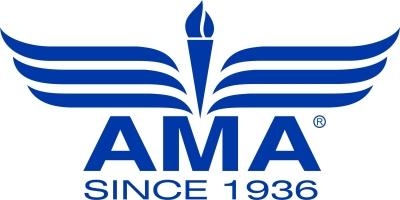Fri, Apr 01, 2016
The FAA Is Now Looking At Regulating The Operators Of Control Line Model Aircraft
ANN April 1 Special Edition
Long before radio controlled model aircraft were in operation, modelers found another way to allow the model builder to actually control their model airplane. This is called control line flying (U-Control) which has been popular since the 1930s.

In a typical U-control operation, the model aircraft is attached to control lines and a control handle that operates the elevator of the aircraft. The operator stands at a center point as the airplane revolves around in a circle. While this is not complete control of the aircraft it does provide the ability to operate the elevators and do numerous stunts some maneuvers.
Now, as the FAA has clamped more restrictions on the flying of radio controlled model aircraft and drones, they are looking at the U-Control flyer next. The FAA has determined that the common length of the control line, which is about 60 feet, is excessive and that it allows the aircraft to be too far away from the operator and fly at it too great of an altitude. Therefore, the FAA is proposing to limit the control line length to 30 feet.
While shortening the control line may not seem like a big deal, The Academy of Model Aeronautics (AMA) disagrees. They remind the FAA that as the control line gets shorter the operator must rotate at a faster speed. A typical 360 degree rotation for a control line operator is about 4 to 6 seconds. By shortening the lines, the rotation speed increases to the point that the operator may become dizzy and collapse. AMA says this could result in the operator releasing the control handle allowing the aircraft to head for parts unknown.

The FAA has quickly responded to this concern by saying that a new medical certification will be created for U-Control model airplane operators. This medical certification will test their ability to withstand rapid rotation of up to 60 revolutions per minute. They say rotation testing devices will be located at various points in the country, and will be operated by FAA medical examiners who will no longer be issuing third class medicals. The FAA also said these testing devices will be funded through registration fees charged to U-Control model aircraft. It is reported that the FAA Aeromedical Division and NASA are preparing to develop this new testing program.
The FAA will also be producing a video to discuss issues surrounding Rapid Rotation Disorientation (RRD) and the registration process for U-Control model airplanes.
More News
Takeoff Roll The process whereby an aircraft is aligned with the runway centerline and the aircraft is moving with the intent to take off. For helicopters, this pertains to the act>[...]
“We’re proud of the hard work that went into receiving this validation, and it will be a welcome relief to our customers in the European Union. We couldn’t be mor>[...]
"Aircraft Spruce is pleased to announce the acquisition of the parts distribution operations of Wag-Aero. Wag-Aero was founded in the 1960’s by Dick and Bobbie Wagner in the >[...]
IDENT Feature The special feature in the Air Traffic Control Radar Beacon System (ATCRBS) equipment. It is used to immediately distinguish one displayed beacon target from other be>[...]
Aero Linx: Pararescue Air Force Pararescuemen, also known as PJs, are the only DoD elite combat forces specifically organized, trained, equipped, and postured to conduct full spect>[...]
 ANN's Daily Aero-Term (05.10.24): Takeoff Roll
ANN's Daily Aero-Term (05.10.24): Takeoff Roll Aero-News: Quote of the Day (05.10.24)
Aero-News: Quote of the Day (05.10.24) Aero-News: Quote of the Day (05.11.24)
Aero-News: Quote of the Day (05.11.24) ANN's Daily Aero-Term (05.11.24): IDENT Feature
ANN's Daily Aero-Term (05.11.24): IDENT Feature ANN's Daily Aero-Linx (05.11.24)
ANN's Daily Aero-Linx (05.11.24)




